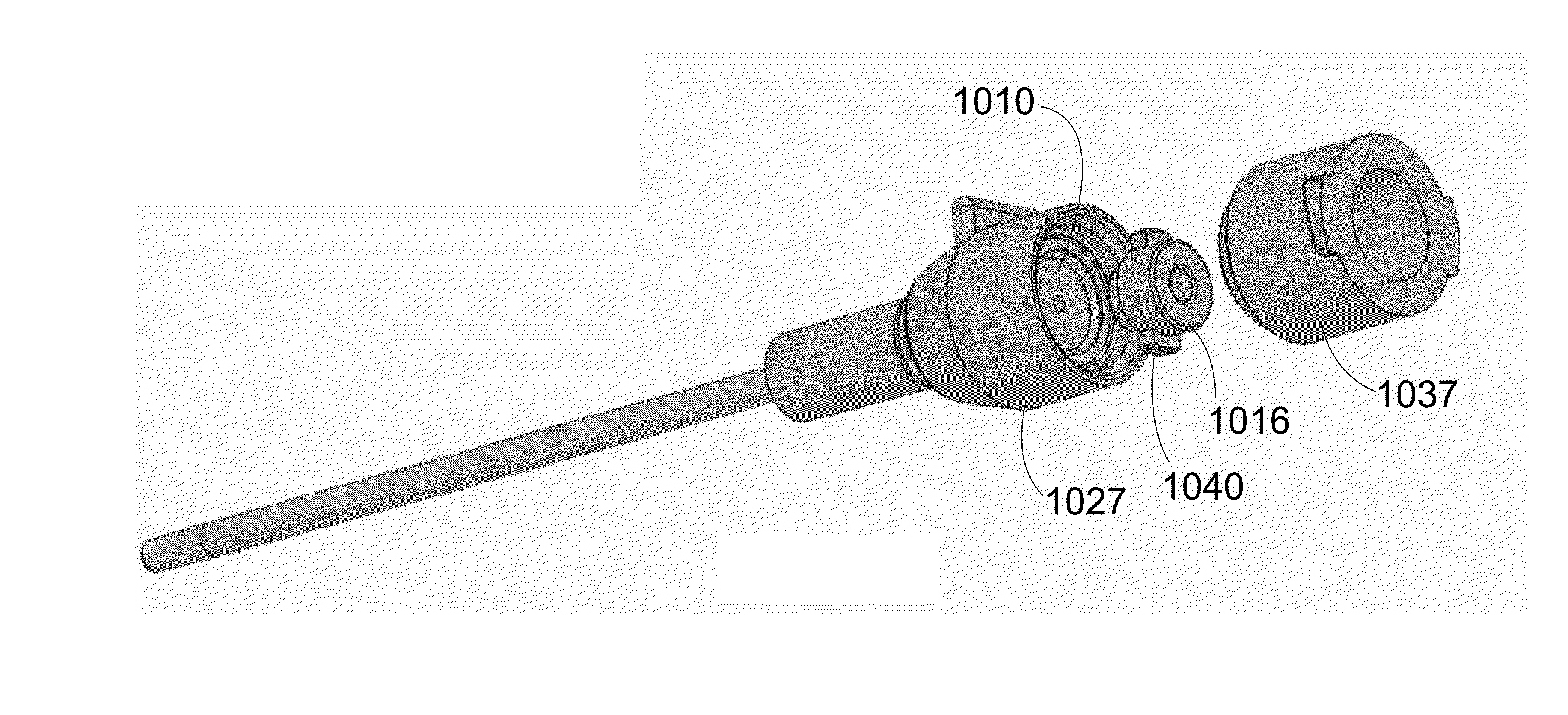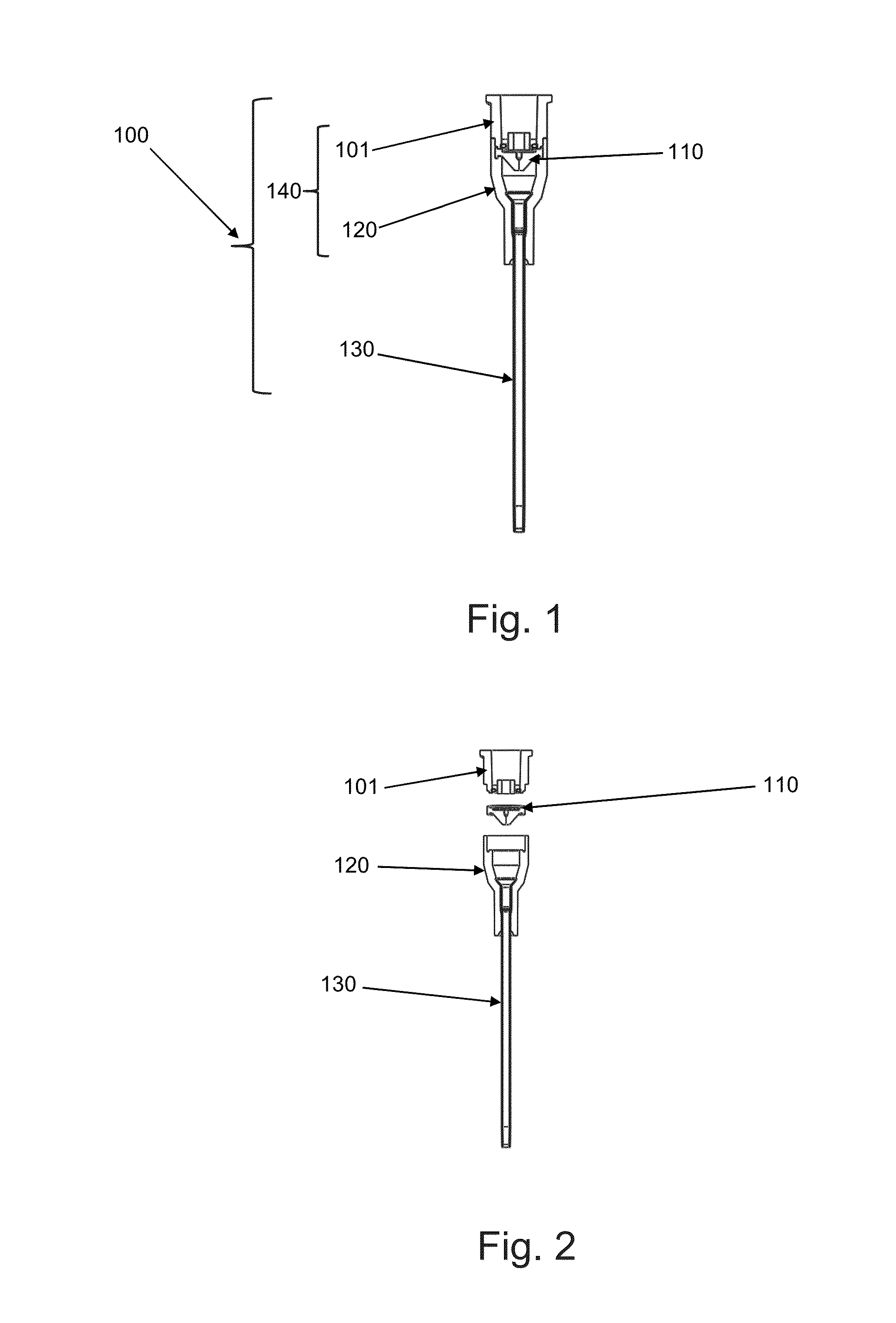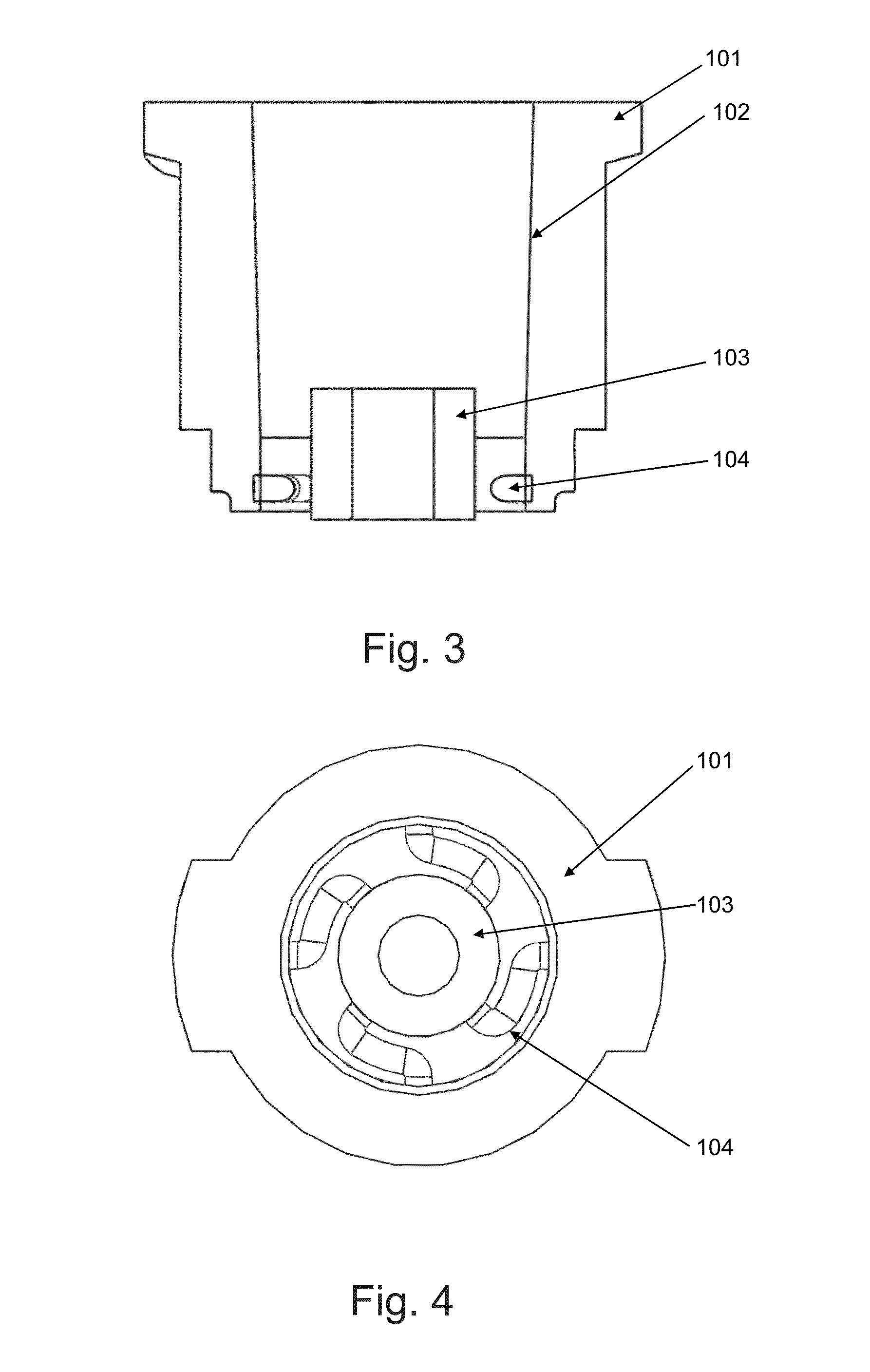Intravenous Catheter with Pressure Activated Valve
- Summary
- Abstract
- Description
- Claims
- Application Information
AI Technical Summary
Benefits of technology
Problems solved by technology
Method used
Image
Examples
example 1
Features of High Performance Catheters
[0109]Dilator—The use of a dilator allows for the use of smaller caliber needles, which can lead to lower puncture forces required as well as less patient discomfort.
[0110]Passive safety feature—This removes the burden from the user to remember to activate a safety feature. The use of the membrane and its location in the fluid path allows the safety feature to respond to the successful access of a vessel by releasing the needle to be retracted. Optionally, the device can have a system to capture a cap over the needle tip as it is removed from the catheter.
[0111]Venting—Vents allow the flow of blood through the device and into the membrane, e.g., without blood exiting proximally.
[0112]Valve actuator—The devices can be equipped with a valve actuator that transfers the axial motion of the luer tip of a syringe in order to open the valve to flow. This allows the use of syringes with various luer tip lengths to actuate the valve.
example 2
Methods of Use
[0113]One desirable function in the present catheter devices is to provide a passive inadvertent needle stick safety feature to an intravenous catheter while creating a secure and hemostatic peripheral venous, central venous or arterial access site.
[0114]After disinfection of the puncture site and removal of a protective cap from the needle, a suitable vein can be punctured. If venipuncture was successful, blood will then travel the length of the needle and present into the flash chamber. The flash chamber fills and then allows some blood to contact the membrane. When the blood soaks into the membrane, it causes it to loss structural strength. The weakened membrane then ruptures and allows the spring to retract the needle into the device rendering it safe to the user.
[0115]The catheter can be advanced further into the vein, while still being supported by the dilator. Upon completion of the catheter insertion, the dilator can be pulled out as it is attached to the handl...
example 3
Adaptors to Receive Various Male Luer Fittings
[0117]In one embodiment of the invention an adapter is integrated into the proximal end of the catheter hub as shown in FIGS. 1-4.
[0118]FIG. 1 shows a cross section of the IV catheter 100 assembled with the catheter hub female luer 101, the pressure activated valve 110, the distal catheter hub 120, and the flexible IV catheter 130. Together, the catheter hub female luer and distal catheter hub make up the catheter hub assembly 140, and are bonded together with adhesive or by ultrasonic or spin welding, or may have a snap fit.
[0119]FIG. 2 shows an exploded view of the assembly in FIG. 1.
[0120]FIG. 3 is a detail view of the catheter hub female luer 101, showing the tapered bore 102 that is dimensionally sized to the ISO standard for a female luer. Near the distal end of the female luer, the adapter 103 is held in position within and concentric with the bore of 101 by the struts 104.
[0121]FIG. 4 is an axial view of the catheter hub female l...
PUM
| Property | Measurement | Unit |
|---|---|---|
| Diameter | aaaaa | aaaaa |
| Resilience | aaaaa | aaaaa |
Abstract
Description
Claims
Application Information
 Login to View More
Login to View More - R&D
- Intellectual Property
- Life Sciences
- Materials
- Tech Scout
- Unparalleled Data Quality
- Higher Quality Content
- 60% Fewer Hallucinations
Browse by: Latest US Patents, China's latest patents, Technical Efficacy Thesaurus, Application Domain, Technology Topic, Popular Technical Reports.
© 2025 PatSnap. All rights reserved.Legal|Privacy policy|Modern Slavery Act Transparency Statement|Sitemap|About US| Contact US: help@patsnap.com



